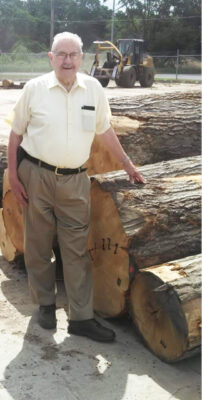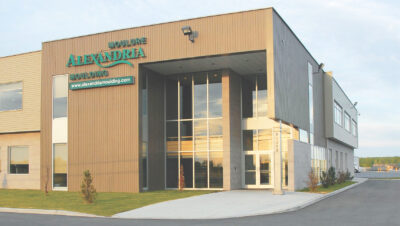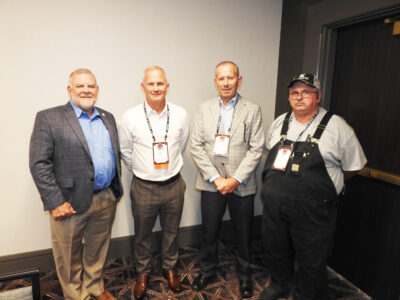After years of volatility, hardwood businesses are looking toward 2025 with cautious optimism. Sixty percent of companies expect increased sales in the coming year, according to the National Wood Flooring Association’s industry outlook. These positive market headwinds make it critical for wood and building material businesses to maximize profits by protecting every aspect of their operations.
To give you a head start, let’s explore the evolving hardwood market, identify emerging risks and share proven strategies that can help you reduce your risks and maximize your business results.
Reasons for hope
A pair of positive market indicators is making our team at Pennsylvania Lumbermens Mutual Insurance Company (PLM) bullish on the hardwood market for 2025. First, the demand for both new homes and remodels remains steady, which is a sign of market strength. Secondly, the Federal Reserve’s 50-basis point interest-rate cut in September—and the expectation of continued rate cuts into 2025—is creating positive vibes.
We also anticipate 2025 to be a return to normalcy for hardwoods. The pandemic-era supply chain crunches that created unprecedented wait times for materials have subsided. Inflationary pressures have eased, too, but we still expect to see some variations in material costs and wages based on a company’s geography, products and customer base.
Practice claims avoidance
Hardwood businesses seeking to take advantage of these positive market conditions should address two of the biggest risks to their businesses: commercial auto and weather-related claims.
While we’ve seen a slight improvement in commercial auto results over the past calendar year at PLM, now is not the time for businesses to take their foot off the throttle. As I travel the country, I see countless billboards advertising the services of personal injury lawyers. Their underlying message: if you get hit by a commercial vehicle, call us and we will help you secure a big payday.
This increased awareness and even anticipation of commercial vehicle accidents raises the risk of nuclear verdicts and other disastrous financial consequences. After all, every accident involving a commercial vehicle brings the potential for a lawsuit, and any suit filed—no matter how frivolous—must be defended. Your insurance company will help defend your position in any suit, but a far better approach is to practice proactive claims avoidance.
Having a written fleet safety policy and educating drivers on the dangers of distracted driving are two must-haves for all hardwood businesses. Also, companies should consider using telematics devices that can alert you to speeding, harsh braking events and other unsafe driving behaviors. Then, use the data you collect to deliver tailored education to drivers who need it the most.
On-board cameras also bring benefits. By capturing video, you can show your drivers areas for improvement in real time. You can also gather evidence that can help exonerate your drivers and your business in court. Dashboard cams can even be used to spot potential insurance fraud. For example, a video that went viral on TikTok in October 2024 appeared to show a driver intentionally backing into another motorist on the Belt Parkway in Queens. The NYPD is investigating the potential scam.
Along with commercial auto risks, weather-related risks are evolving rapidly. This fall, we saw Hurricane Helene bring tremendous flooding to western North Carolina, an area typically not affected by such extreme weather events. We’ve also seen tornadoes, wildfires and other natural disasters occurring across the nation with continuing frequency.
Hardwood businesses looking to prevent weather-related claims should know the top risks in their area of the country, then act to mitigate them. For example, businesses in regions known for wildfires should create one-hundred-foot noncombustible buffer zone around their facilities. Businesses in hurricane zones should consider installing hurricane clips and using other hurricane-rated building materials.

Reduce your risks
Hardwood businesses can further reduce their risk profile with these tried-and-true steps.
• Understand your exposures. We encourage our customers to complete a business income worksheet with their accountant. This step helps businesses determine appropriate levels of coverage before a loss occurs, which streamlines claim processing at the time of the loss.
• Cover all vehicles. Assess your entire fleet, including owned, leased or rented vehicles, and make sure any vehicle used for business purposes is covered. Also, review your policies to ensure your coverage needs haven’t changed.
• Stay vigilant with housekeeping. Keep up with electrical and routine maintenance. For example, make sure your fire suppression and dust filtration systems are in good working order, and keep all cords free from dust and debris.
Tell your story
As a company that has insured wood-related businesses for more than 125 years, we have a vested interest in the overall health of the hardwood industry. That’s why we also believe it’s essential for companies to educate consumers about the role of wood products in creating a greener, more sustainable economy.
As engineered faux-wood materials luxury vinyl plank (LVP) flooring threaten to steal market share, hardwood companies must stress the beauty, durability and low-carbon value of wood products. The Real American Hardwood® campaign offers excellent resources for businesses. In addition, businesses should consider supporting trade associations and lobbying groups—such as the Hardwood Federation and Southeastern and Northeastern Lumber Manufacturers Associations—to give the industry a solid, single voice.
Also, seek ways to show how wood products are on the leading edge of innovation. For example, we are seeing mass timber construction take hold in the U.S. An alternative to steel and concrete, mass timber provides excellent strength and stability while reducing the overall carbon footprint of a newly constructed building.
As hardwood businesses brace for a potentially profitable 2025, proactive risk management has never been more essential. By understanding your exposures, calculating potential losses before they happen, and ensuring proper staff training, you can weather any challenges and set the stage for your best year ever.
To learn more visit www.plmins.com and email sbriscoe@plmins.com.

The author
Sean T. Briscoe is the assistant vice president of underwriting at Pennsylvania Lumbermens Mutual Insurance Group (PLM). PLM is the nation’s oldest and largest mutual insurance company dedicated to the wood products, lumber and building materials industry.







